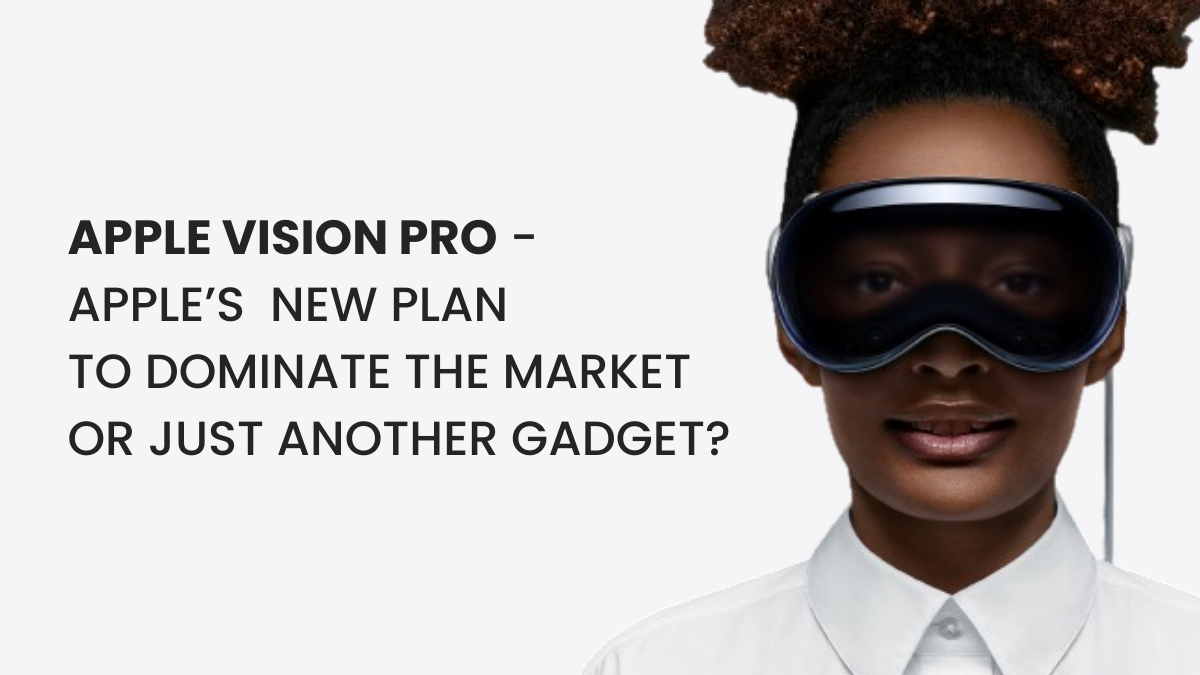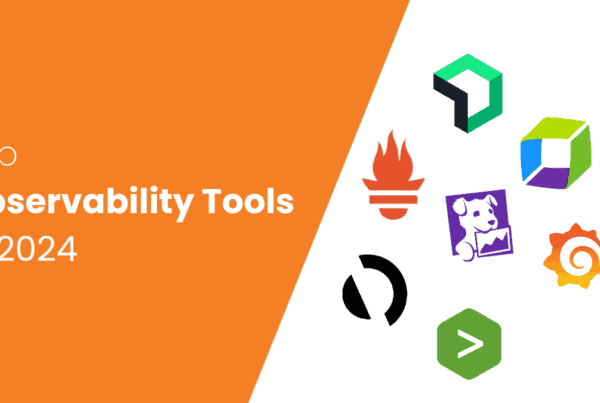
Apple is a company that has always been at the forefront of innovation, creating products that redefine the way we communicate, work, and play. From the Macintosh to the iPhone, from the iPod to the iPad, Apple has consistently delivered devices that combine cutting-edge technology, elegant design, and intuitive user experience.
Now, Apple has introduced its most ambitious product yet: the Apple Vision Pro. The Apple Vision Pro is a mixed-reality headset that lets you navigate, interact, and spatially enjoy the content.
But what is the Apple Vision Pro really for? Is it Apple’s new plan to dominate the market or just another gadget? In this article, we will explore the features and benefits first, and then we will discuss the expected plans, potential applications, use cases, and implications of the Apple Vision Pro for consumers, businesses, and society.
What is Apple Vision Pro?
Apple Vision Pro is a mixed-reality headset that lets you navigate, interact, and spatially enjoy content. It features a 3D camera setup (12 cameras), a custom micro-OLED display, spatial audio, and a dual-chip system with advanced technology and design.
It has a curved laminated glass display on the front, a flexible cushion on the inside, and a removable, adjustable headband and aluminum frame on its sides. The frame contains five sensors, six microphones, and 12 cameras. The headset also comes with a tethered external battery that connects to the left arm of the frame with a magnetic connector.
It has a resolution of 3660 x 3200 pixels per eye, which is more than a 4K TV. It supports refresh rates of 90Hz, 96Hz, and 100Hz, and can play video at multiples of 24fps and 30fps without judder. This gadget also supports HDR with Dolby Vision, HDR10, and HLG.
The Vision Pro is powered by the Apple M2 chip, which has an 8-core CPU, a 10-core GPU, and a 16-core Neural Engine. It also has 16GB of unified memory, 12-millisecond photon-to-photon latency, and 256GB/s memory bandwidth.
It has a stereoscopic 3D main camera system that can capture spatial photos and videos in 3D, with 18 mm, f/2.00 aperture, and 6.5 stereo megapixels. It also has two high-resolution main cameras, six world-facing tracking cameras, four eye-tracking cameras, a TrueDepth camera, a LiDAR scanner, four inertial measurement units (IMUs), a flicker sensor, and an ambient light sensor.
It supports dynamic head tracking, personalized spatial audio, and spatial audio with a six-mic array with audio ray tracing and directional beamforming. It also supports an H2-to-H2 ultra-low-latency connection to AirPods Pro (2nd generation) with a MagSafe Charging Case (USB-C).
The Apple Vision Pro runs on visionOS, Apple’s first spatial operating system. It allows you to control the headset with your eyes, hands, and voice, and to use apps in your space. You can also access features like FaceTime, Safari, Notes, Messages, and more.
The Vision Pro comes in three storage options: 256GB, 512GB, and 1TB. The prices are $3,499, $3,699, and $3,899 respectively. You can also choose to add ZEISS Optical Inserts for readers or prescription lenses, which cost $99 and $149 respectively. You can buy it here.
The Apple Vision Pro was released and became available to buy on February 2, 2024, from US Apple stores online and in-person. It is currently available in the US through Apple’s website and physical stores. Availability and pricing of Vision Pro for other markets are yet to be confirmed, but Apple says that the gadget will be available in more countries in Q4 2024.
Apple Vision Pro User Reviews and Feedback
The Apple Vision Pro has been one of the most anticipated and controversial products of 2024. Since its launch in February, the mixed-reality headset has received a lot of attention from the media, the public, and the industry. But what do the actual users think of it? How does it live up to the hype and the expectations? And what are the main strengths and weaknesses of the device?
To answer these questions, we have gathered and analyzed some of the user reviews and feedback from various sources, including news articles, web reviews, and social media posts. Here is a summary of our findings, along with the pros and cons based on user experiences.
The user reviews and feedback for the Apple Vision Pro are mixed, ranging from positive to negative, and from enthusiastic to disappointed. Some users praise the device for its innovative features, stunning display, and immersive content, while others criticize it for its high price, bulky design, and limited functionality.
According to Mark Gurman, a well-known Apple analyst and journalist, the Apple Vision Pro has encountered significant returns, prompting scrutiny from Apple. He reports that some users have returned the headset due to comfort, price, and user experience issues. He also says that Apple is investigating the reasons behind the returns and engaging with customers to gather feedback for potential improvements.
On the other hand, some users have expressed their satisfaction and admiration for the device, calling it a fascinating, groundbreaking, and must-see product. Jason Hiner, editor-in-chief, ZDNET, says that the Apple Vision Pro is a triumph of engineering and a big leap forward for the next stage of immersive digital experiences. He also says that this device tells us a lot about the future of technology and that it is one of those breakthrough products that comes around only once or twice a decade.
Britta O’Boyle, a writer for iMore, also shares her positive impressions of the device, saying that she was wrong to be skeptical about it and it is arguably the most important device Apple has made since the iPhone. She highlights the features that she was most excited about, such as Spatial Video, Encounter Dinosaurs, and Alicia Keys Rehearsal Room.
Pros and Cons of Apple Vision Pro Based on User Experiences
Based on the user reviews and feedback, we have identified the following pros and cons of the Apple Vision Pro:
Pros:
- Spatial Video and Spatial Photos are must-see features that allow users to capture and watch 3D content spatially, creating a sense of presence and emotion.
- Interactive digital experiences open new possibilities for entertainment, education, and communication, such as encountering dinosaurs, visiting museums, and joining concerts.
- High-fidelity video competes with the best quality TVs, offering a resolution of 3660 x 3200 pixels per eye, HDR with Dolby Vision, and refresh rates of up to 100Hz.
- Immersive environments feel like being on a holodeck, allowing users to explore and interact with realistic and fantastical worlds.
Cons:
- Eye tracking needs to be regularly re-calibrated, which can be annoying and disruptive to the user experience.
- Uncomfortable to wear for extended use, due to the weight, size, and heat of the device.
- Immersive apps are still early and limited, lacking in variety, quality, and compatibility.
- Not good for exercise or other active uses, as the device can easily slip off or get damaged.
Is Apple Vision Pro Worth the Investment?
The Apple Vision Pro, a mixed-reality device, offers an immersive experience with a stunning display and a powerful processor. It integrates well with the Apple ecosystem and is priced at $3,499.
For developers, enthusiasts, or early adopters interested in cutting-edge mixed-reality technology, the Vision Pro could be a worthwhile investment. It offers new possibilities for entertainment, education, and communication, and allows users to be part of shaping Apple’s future computing vision.
However, for casual users, gamers, or budget-conscious consumers, the Vision Pro might not be the best option due to its high cost, bulkiness, and limitations. They might prefer to wait for a more affordable, lighter, and refined version of the device reportedly in the works for 2025, or opt for other lower-priced alternatives that still offer a great VR or AR experience.
Future with Apple Vision Pro
Apple’s CEO, Tim Cook, has announced the advent of a new era in computing with the introduction of the Apple Vision Pro, a device that he describes as a marvel of innovation and years ahead of anything created before. Let’s take a look at how Apple will move ahead from here:
Apple’s Plan with Apple Vision Pro
This device is expected to redefine the boundaries of technology and digital interaction in several ways:
- Integration with Ecosystem: The Vision Pro is expected to integrate seamlessly with existing Apple devices like iPhones, iPads, and MacBooks. This could allow users to capture the real world with their iPhone’s camera and overlay it with AR content via the Vision Pro, creating a continuous user experience across devices.
- Content Creation and Consumption: Apple is likely to focus on both content creation and consumption. Artists could sculpt virtual masterpieces, architects design buildings, and educators conduct immersive lessons within the Vision Pro. For consumers, it could revolutionize entertainment, enabling experiences like watching movies in a virtual theater, attending live concerts from the living room, or exploring historical sites virtually.
- Health and Wellness: In line with Apple’s passion for health, the Vision Pro might incorporate biometric sensors, eye-tracking, and gesture recognition. This could enable personalized fitness coaching, meditation apps, and even virtual therapy sessions. It could also enhance productivity by allowing users to manipulate digital interfaces with gestures.
- Collaboration and Communication: The Vision Pro could transform virtual meetings by allowing participants to sit around a virtual table, share documents, and brainstorm ideas. It might also enable users to “teleport” to a friend’s virtual space, bridging physical distances.
- Privacy and Security: Apple’s commitment to privacy is expected to continue with the Vision Pro. User data protection, secure authentication, and robust encryption are likely to be prioritized. Users might be able to control what others see in their virtual space.
- Developer Ecosystem: Apple is likely to encourage developers to create innovative experiences for the Vision Pro. The App Store for the Vision Pro could become a hub of creativity, with ARKit and RealityKit evolving to enable richer and more realistic AR/VR content.
- Fashion and Design: Apple’s design ethos is expected to extend to the Vision Pro, which could be sleek, minimalistic, and comfortable. Users might be able to choose from various frames, colors, and materials.
Future with Apple Vision Pro
Apple Vision Pro has the potential to revolutionize several fields and enhance various aspects of work. Let’s explore some of the domains where this cutting-edge technology can make a significant impact:
Augmented Reality (AR) Applications
- Training and Education: Apple Vision Pro can create immersive training simulations, allowing learners to practice real-world scenarios in a safe environment. Medical students, mechanics, and pilots can benefit from realistic training experiences.
- Architecture and Design: Architects and interior designers can visualize 3D models of buildings, interiors, and landscapes directly in their workspace. This aids in better planning, collaboration, and client presentations.
- Retail and Commerce: Retailers can offer interactive shopping experiences, allowing customers to virtually try on clothes, accessories, or home decor items. AR navigation within stores can enhance the shopping process.
Productivity and Collaboration
- Remote Work: Apple Vision Pro can transform remote work by enabling virtual collaboration. Colleagues can meet in shared virtual spaces, annotate documents together, and hold lifelike meetings.
- Design and Creativity: Graphic designers, artists, and animators can work directly in 3D space, manipulating objects, textures, and lighting intuitively. Collaboration on creative projects becomes seamless.
Healthcare and Medicine
- Surgical Planning: Surgeons can visualize patient anatomy in 3D, aiding in preoperative planning and minimizing risks during complex procedures.
- Medical Training: Medical students can practice surgeries and diagnostics using realistic simulations. AR overlays can provide real-time information during procedures.
Entertainment and Gaming
- Immersive Gaming: Gamers can step into their favorite game worlds, interact with characters, and explore environments as if they were physically present.
- Live Events and Concerts: Attend virtual concerts, theater performances, and sports events from the comfort of your home.
Engineering and Manufacturing
- Prototyping and Design: Engineers can visualize and iterate on product designs in 3D space. Collaborative design reviews become more effective.
- Maintenance and Repair: Technicians can follow step-by-step AR instructions overlaid on machinery or equipment, simplifying maintenance tasks.
Social Interaction and Communication
- Social AR: Friends and family can share virtual spaces, play games, and watch movies together, even when physically apart.
- Language Translation: Apple Vision Pro can translate signs, menus, and text in real-time, making travel and communication easier.
Art and Creativity
- Digital Artistry: Artists can create 3D sculptures, paintings, and installations in a virtual studio.
- Music Composition: Musicians can compose music in a spatial environment, arranging notes and instruments around them.
Environmental Awareness and Navigation
- Navigation and Wayfinding: Apple Vision Pro can overlay directions, points of interest, and contextual information in the real world, enhancing navigation.
- Environmental Data Visualization: Scientists and researchers can visualize climate data, pollution levels, and ecological changes in 3D.
The true potential of Apple Vision Pro lies in its ability to blend seamlessly with our daily lives, unlocking new possibilities across diverse fields. As adoption grows, we can expect even more innovative applications to emerge!
Spatial Computing over Metaverse
While the Apple Vision Pro combines virtual reality (VR) and augmented reality (AR), Apple prefers the term “spatial computing” over “Metaverse”. This strategic move is aimed at avoiding some of the controversies and worries linked to the Metaverse, indicating a fresh perspective on immersive technology.
The introduction of the Apple Vision Pro has sparked renewed interest in immersive technologies, leading to debates on whether it represents a “Metaverse Renaissance” or something entirely new. Regardless of the perspective, it’s clear that Apple’s entry adds a thrilling dimension to the ever-changing tech world. However, it’s important to remember that these are speculations and not prophecies. The actual impact of the Vision Pro will depend on how well Apple executes its vision.
Conclusion
The Apple Vision Pro is a big leap in the world of mixed reality, blending virtual and augmented reality in a unique way. People who’ve used it have shared both good and bad experiences. Despite its high cost, it has the potential to change many areas like work, health, entertainment, engineering, and more, making it a good buy for some.
Apple’s goal with the Vision Pro isn’t just to rule the market, but also to shape the future of computing. The device could be used in many ways in AR, from making social interactions and creativity better to helping us understand our surroundings better.
Interestingly, Apple prefers to call this immersive technology “spatial computing” instead of “Metaverse,” showing a new way of thinking. Whether this is the start of a new era or just another tech gadget, only time will tell. But one thing is clear – the Apple Vision Pro has made people more interested and excited about immersive technologies.
References:
- https://www.apple.com/apple-vision-pro/
- https://www.apple.com/shop/buy-vision/apple-vision-pro
- https://www.businessinsider.com/guides/tech/apple-vision-pro-order-price-release-date-features
- https://techcrunch.com/2023/06/05/the-apple-vision-pro-headset-will-cost-3499-out-early-2024/
- https://www.techradar.com/computing/virtual-reality-augmented-reality/apple-vision-pro-review-the-spatial-computing-revolution-is-here-and-i-love-it
- https://startuptalky.com/apples-marketing-strategy/
- https://www.livemint.com/technology/gadgets/gurman-uncovers-mixed-reactions-to-apple-vision-pro-release-sheds-light-on-return-rates-11708345184441.html
- https://www.thehansindia.com/technology/tech-news/apple-vision-pro-returns-mark-gurman-evaluates-user-reactions-859521
- https://www.msn.com/en-us/lifestyle/shopping/apple-vision-pro-review-fascinating-flawed-and-needs-to-fix-5-things/ar-BB1izMls
- https://www.zdnet.com/article/apple-vision-pro-review/
- https://www.tomsguide.com/best-picks/best-apple-vision-pro-alternatives
- https://www.apple.com/newsroom/2024/03/apple-vision-pro-unlocks-new-opportunities-for-health-app-developers/



